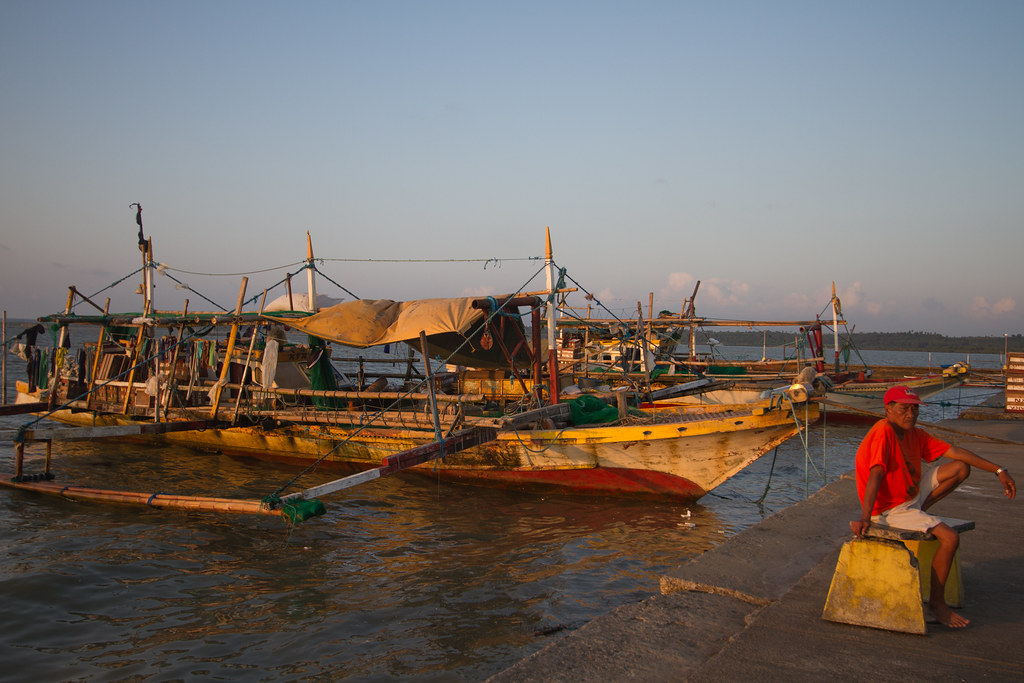Water Wars: A Sinking Feeling in Philippine-China Relations
Philippine and Chinese officials will launch a joint investigation into the at-sea collision that left 22 Filipino fishermen stranded in the South China Sea. On June 9—the official Philippines-China Friendship Day—a Chinese vessel rammed and sank a Philippine fishing vessel near Reed Bank (known in Tagalog as Recto Bank), northeast of the Spratly Islands, and reportedly fled after the collision. A Vietnamese fishing vessel later rescued the Filipino crew members who had been left in the water.

Published by The Lawfare Institute
in Cooperation With

Philippine and Chinese officials will launch a joint investigation into the at-sea collision that left 22 Filipino fishermen stranded in the South China Sea. On June 9—the official Philippines-China Friendship Day—a Chinese vessel rammed and sank a Philippine fishing vessel near Reed Bank (known in Tagalog as Recto Bank), northeast of the Spratly Islands, and reportedly fled after the collision. A Vietnamese fishing vessel later rescued the Filipino crew members who had been left in the water. Philippine officials sought to downplay the collision, with Philippine President Rodrigo Duterte calling it a “little maritime incident.” After several days of protests in the Philippines on both the streets and social media, however, the Duterte administration announced plans for a joint Philippine-Chinese investigation into the collision. Critics say the Duterte administration has prioritized Philippine-China trade and investment over rival territorial claims causing conflict in the South China Sea.
Philippine Senator Panfilo Lacson said a joint investigation with Chinese authorities would be tantamount to waiving Philippine ownership rights of Reed Bank. He noted that the 2016 Hague ruling on Philippine-China maritime disputes stated that the bank was within the Philippine’s 200-nautical mile exclusive economic zone (EEZ).
This is only the most recent of a series of collisions: According to the Center for Strategic International Studies (CSIS), the China Coast Guard or Chinese fishing vessels were involved in at least 10 ramming incidents in the South China Sea from 2014 to 2016.The recent ramming shows how “gray-zone” conflict between Philippine vessels and the Chinese maritime militia can trigger U.S. intervention in the South China Sea. In January, U.S. Chief of Naval Operations Adm. John Richardson warned his Chinese counterpart that the U.S. Navy would treat the China Coast Guard and Chinese maritime militia vessels as combatants in any provocations. In March, Secretary of State Mike Pompeo affirmed that the U.S.-Philippine Mutual Defense Treaty applies to maritime conflict in the South China Sea, while U.S. Ambassador to the Philippines Sung Kim reiterated on June 14 that “any armed attack on Filipino vessels” would trigger U.S. obligations under the treaty. Kim said an “armed attack” would include those launched by “government-sanctioned militias,” adding that the recent ramming was a “very serious situation” and required a thorough investigation. Though such statements by the U.S., in theory, might deter gray-zone aggression from the Chinese maritime militia, such posturing could also lower the threshold for a U.S.-China conflict in the region.
In Other News...
In Military Deployments
In mid-June, China deployed four J-10 fighters to Woody Island (known in Chinese as Yongxing and in Vietnamese as Phu Lam) in the Paracel Islands (known in Chinese as Xisha and Vietnamese as Hoàng Sa), for the first time since 2017. Israeli satellite imagery spotted the Chinese fighters near the runway of the Chinese-occupied airpost on June 19. The aircraft were exposed, rather than inside the island’s hangars, causing some commentators to speculate that Chinese officials positioned them for the view of overhead satellites. The Paracels sit in the north of the South China Sea and have been occupied by the Chinese ever since the country’s naval forces defeated South Vietnamese forces in 1974.
The Global Times, a Chinese Communist Party mouthpiece, ran an article covering the J-10 deployment. The article signals Chinese government approval, if not encouragement, in broadcasting news of the event. Interestingly, the Global Times cited a CNN source who postulated that the deployment may serve to get “the J-10 squadron operationally ready” for a Chinese declaration of an Air Defense Identification Zone (ADIZ) in the South China Sea. China declared an ADIZ over the East China Sea in November 2013, imposing identification rules for flights through the area. The Global Times, however, refuted the CNN source and said that “China never confirmed that it may set up an ADIZ in the South China Sea, and there has been no indication of such.”
Meanwhile, on June 23, the Australian Broadcasting Company reported possible plans to build a new Australian port facility 40 kilometers northeast of Darwin to facilitate ongoing U.S. Marine deployments to the region. Reporting suggested that a new facility would be able to accommodate larger amphibious ships that transport Marines—such as the USS Wasp, which arrived in Sydney for a port visit on June 17. In 2015, Australia’s Northern Territory government leased the commercial port of Darwin to a Chinese company for 99 years.
In Politics
On June 22, Thailand’s foreign ministry announced that Southeast Asian nations were making “good progress” on a multilateral Code of Conduct (COC) for the South China Sea. The Association of Southeast Asian Nations (ASEAN) and China first announced talks on the South China Sea COC back in November 2017. Foreign ministers from ASEAN had been meeting in Bangkok to negotiate the draft, with Thai officials reporting that they expect a first reading of the COC by the end of the year.
Phillipine President Duterte disagreed on the state of progress, “express[ing] concern and disappointment over the delay in the negotiations” for a COC. A statement from his administration said that the longer the delay, the greater the chance of maritime incidents and miscalculation in the South China Sea. Ahead of the ASEAN Summit, Duterte told reporters that he would “talk lengthily” about China’s sweeping claims over the South China Sea. The Philippines is the coordinator of the ASEAN-China dialogue partnership until 2021 and leads negotiations on the COC.
On June 23, the 34th ASEAN Summit held its opening ceremony in Bangkok. ASEAN leaders have committed to fast-tracking the completion of the COC, as the recent ramming of the Phillipine vessel looms in the background.
Also on June 23, Duterte and Indonesian President Joko Widodo announced an agreement on boundaries between overlapping EEZs of the Philippines and Indonesia in the Mindanao Sea and the Celebes Sea. The two presidents made the announcement on the sidelines of the ASEAN Summit, marking the end of more than 20 years of negotiations between the two countries. The bilateral agreement is set to go into effect later this year.
The G-20 Summit in Osaka, Japan, will occur from June 27 to 28. President Trump and Chinese President Xi Jinping will meet one-on-one at the summit, though the trade war, Huawei and North Korea will likely take precedence over the South China Sea.
Analysis
At The Diplomat, Rick Joe summarizes the development of China’s aircraft carrier program. China purchased its first aircraft carrier, named the Liaoning (CV-16), from Ukraine in 1998. China’s second carrier, referred to as “Carrier 002” until it commissions, launched from the Dalian shipyard in 2017 and has been undergoing sea trials since mid-2018. Carrier 002 is China’s first domestically built carrier and is modeled after the Liaoning with its distinctive ski-jump flight deck. Additionally, China is building “Carrier 003” in the Shanghai shipyard of Jiangnan. Unlike China’s other carriers, Carrier 003 is a “Type 002” that will likely have electromagnetic catapults to launch its aircraft. All three of China’s carriers will use conventional, rather than nuclear, propulsion. Joe assesses that a future “Carrier 004” will likely arrive by the mid- to late 2020s, as either a second Type 002 carrier or China’s first nuclear-powered carrier. Chinese military experts predict that the country will operate at least five carriers within the next 10 years.
Linette Lopez from Business Insider argues that the real conflict between the United States and China centers on Taiwan, not the trade war. Reuters reported on June 5 that Congress received informal notification of a $2 billion sale of U.S. weapons to Taiwan. The potential sale includes 108 M1A2 Abrams tanks, more than a thousand anti-tank missiles and 250 anti-aircraft Stinger missiles. Other developments in U.S.-Taiwan policy include Taiwan’s National Security Council Secretary-General David Lee meeting with U.S. National Security Adviser John Bolton in May—the first such meeting since the United States ended diplomatic relations with Taiwan in 1979. Additionally, the Department of Defense’s recent Indo-Pacific Strategy Report referred to Taiwan as one of “four countries” central to U.S. strategy, in apparent violation of the One-China Policy that avoids reference to Taiwan as its own sovereign state. Taken alone, the report’s reference to Taiwan as a country appears to be a bureaucratic oversight. In the context of other U.S. actions, however, the Trump administration may be doing its best to support Taiwan while wearing the straightjacket that is the One-China Policy.





